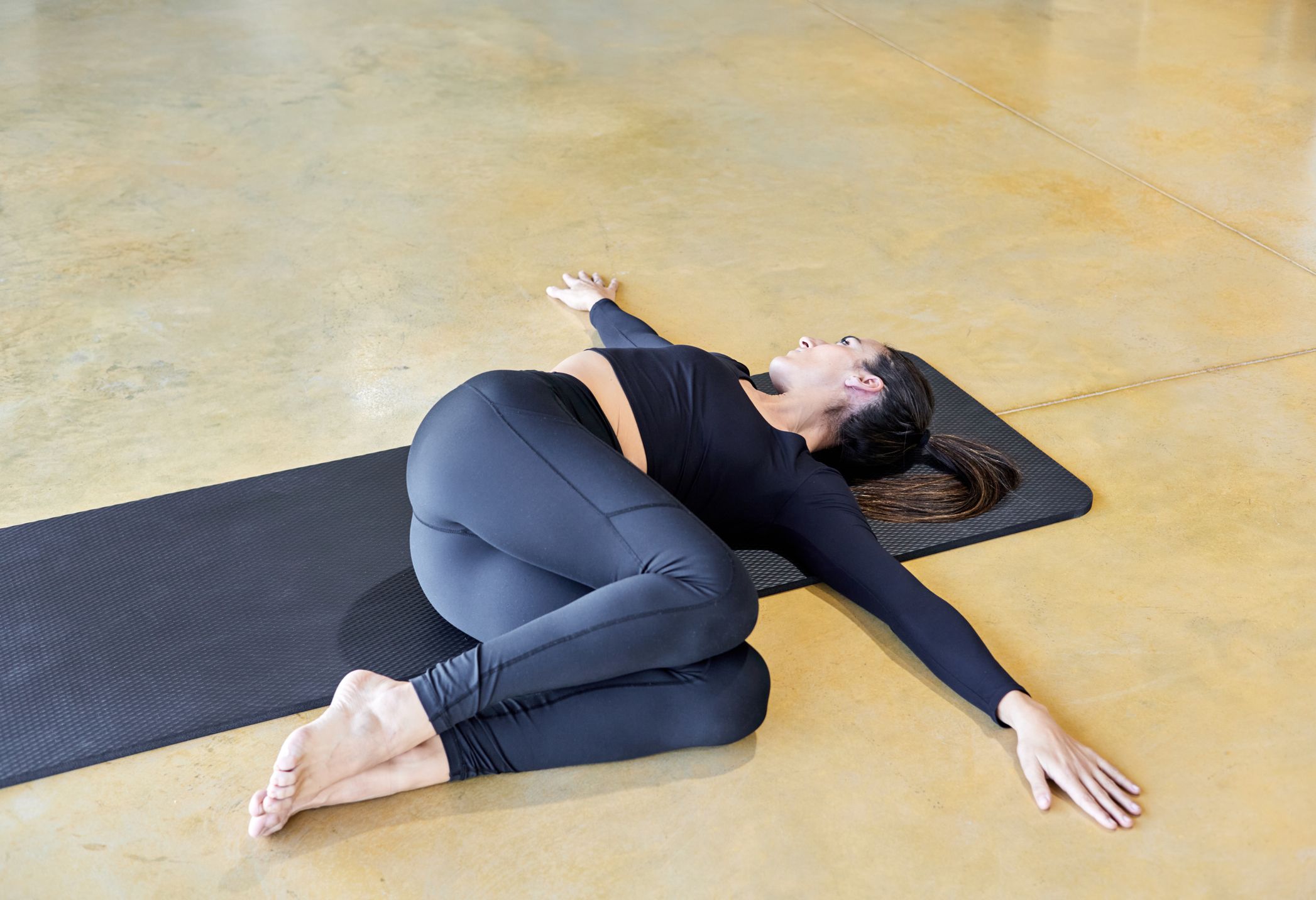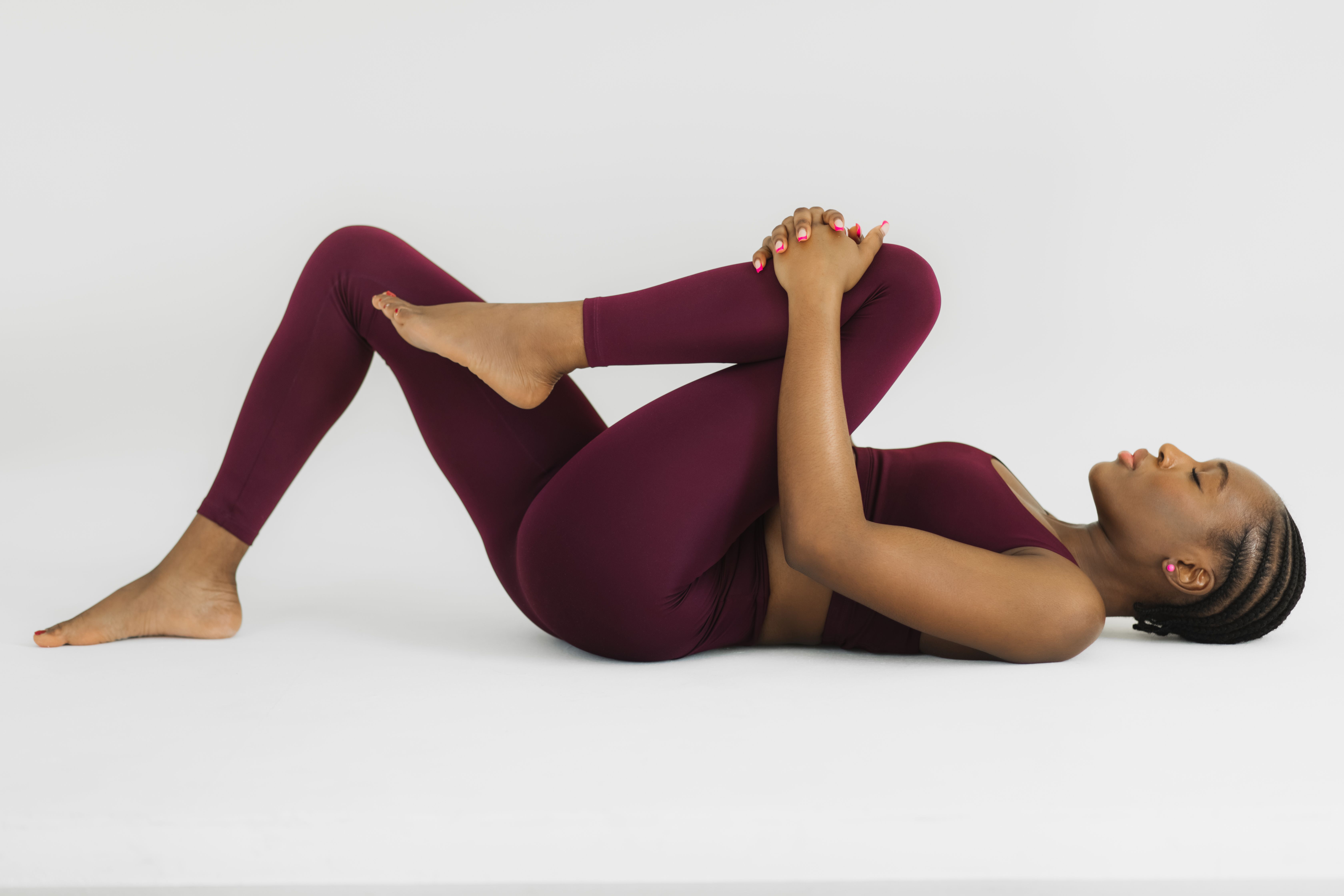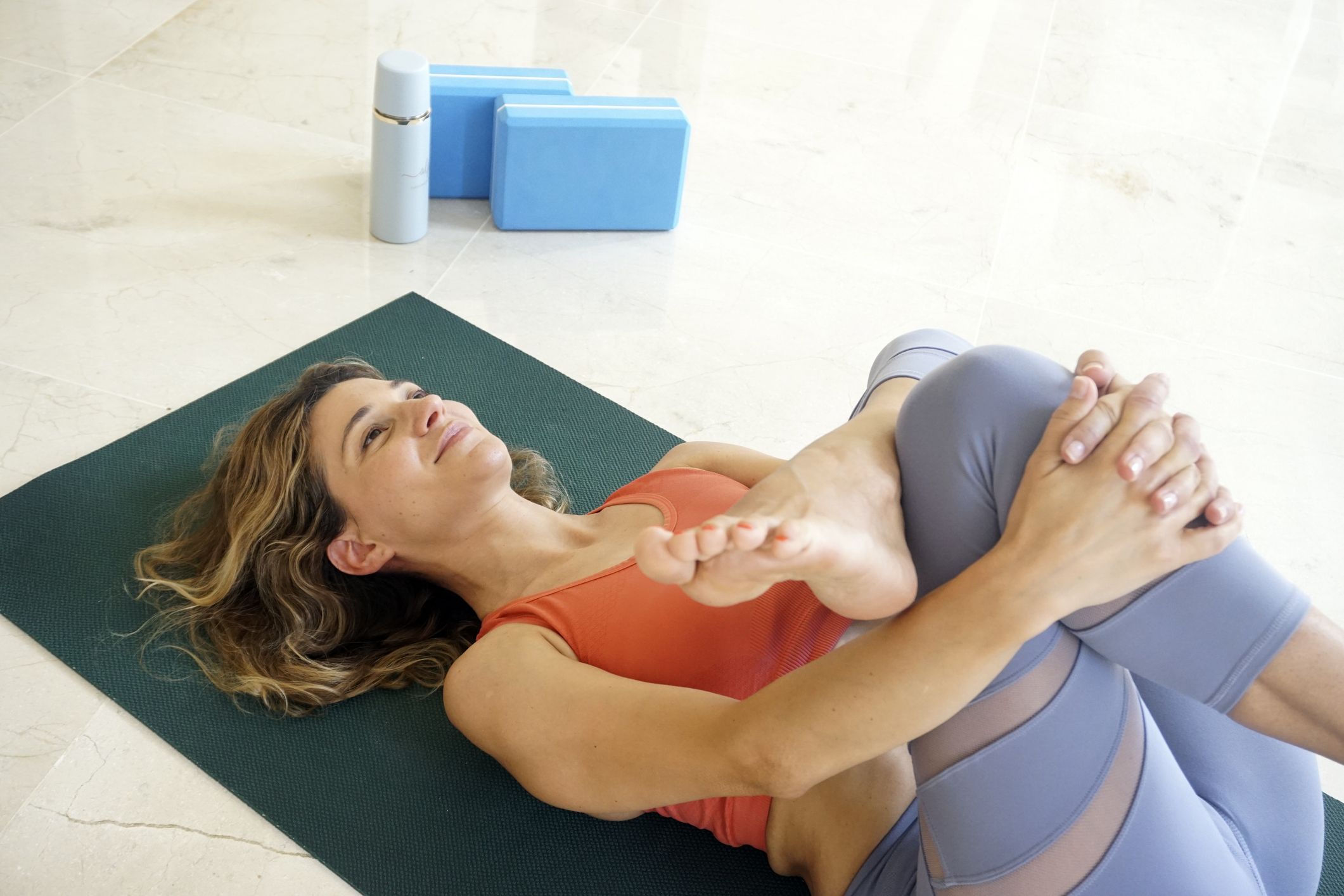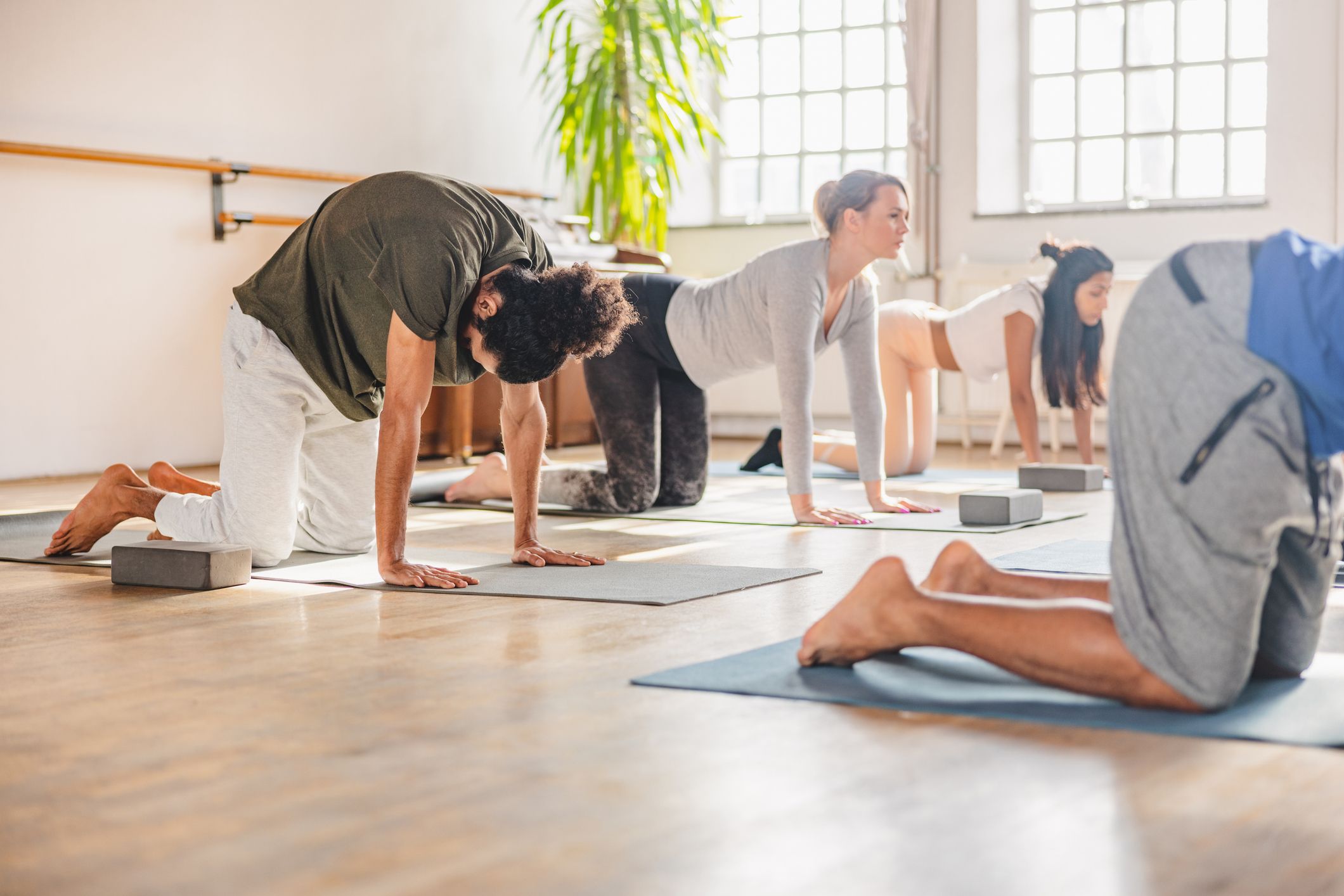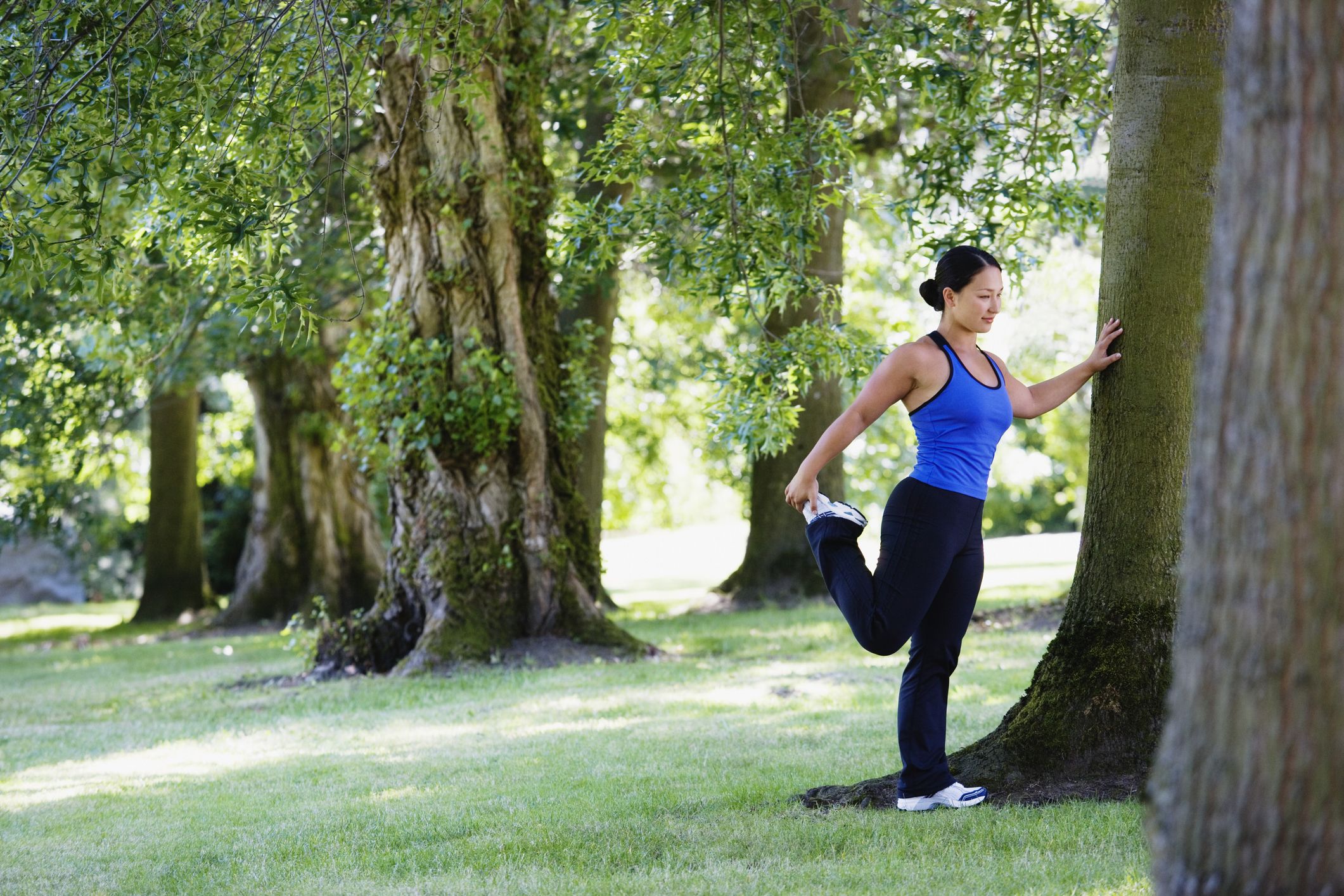If muscle stiffness or joint pain makes it hard to start your day feeling your best, incorporating a morning stretch routine could be the missing piece. “After a night of sleeping, the body can feel stiff, especially for those with conditions like arthritis, due to muscle inactivity,” says licenced physiotherapist Melissa Prestipino. “A gentle morning stretch routine helps boost circulation, improve flexibility and reduce muscle tension, setting a positive tone for the day ahead.”
While stretching at any time of day is beneficial, there are specific advantages to doing it in the morning. “A big benefit of stretching is that it helps counteract the postures we’ve been stuck in overnight,” says physical therapist Kelcie VanGampleare. “Most people tend to curl up while they sleep, so a morning stretch routine can help loosen the muscles and joints and prepare the body for movement.”
Beyond the physical benefits, stretching in the morning offers a moment to practise mindfulness and prioritise mental wellbeing. “It allows for dedicated time to care for your body before diving into work and responsibilities,” explains physical therapist and orthopaedic specialist Karena Wu.
Experts share their top morning stretches, plus tips for building a routine that works for you.
Morning stretch routine
1. Lumbar trunk rotation stretch
- Lie on your back with your knees bent and feet flat on the floor.
- Keep your arms out to the sides for support.
- Slowly rotate your lower body to one side while keeping your shoulders on the ground.
- Hold for 10-15 seconds.
- Switch sides.
Benefits: This stretch helps loosen the lower back and improve spinal mobility, says Prestipino. It’s a great way to ease into movement after sleep.
2. Single knee-to-chest stretch
- Lie flat on your back with your knees bent.
- Slowly lift one leg (with the knee bent) toward your chest.
- Move gently, only bringing your knee as high as is comfortable.
- Hold the knee for 20 seconds.
- Repeat three times on each side.
Benefits: A knee-to-chest stretch helps loosen the lumbar fascia, flatten the spine’s natural curve, and boost circulation to the back muscles, says Prestipino. If this stretch puts strain on your neck or shoulders, she suggests using a yoga strap behind the crease of the knee for support.
3. Piriformis (figure 4) stretch
- Lie on your back with your knees bent.
- Cross your left ankle over the opposite right knee.
- Reach through the thighs and hold onto the back of the right knee, pulling this knee in toward your chest.
- You should feel the stretch on the outside of your left hip.
- Hold this position for 20-30 seconds.
- Repeat three times on each side.
Benefits: This stretch helps release tension in the lower back, piriformis, and glutes, making it especially useful for those experiencing sciatic-like pain, says Prestipino.
4. Supine hamstring stretch
- Lie flat on your back with one leg bent.
- Use a yoga or stretch strap on the plantar surface of the opposite foot (around the metatarsals).
- Straighten the knee of the strapped foot, pulling the toes toward your head.
- Gently lift the strapped leg up toward the ceiling, to your tolerance (as high as the knee stays straight).
- Hold for 20-30 seconds.
- Repeat three times on each leg.
Benefits: Stretching the hamstrings in this way can help release tightness in the lower back, which can build up overnight, says Prestipino.
5. Cat-cow stretch
- Start on your hands and knees in a tabletop position.
- Inhale and slightly move your belly toward the floor, lifting your head and tailbone (cow).
- Exhale and round your spine, tucking your chin toward your chest (cat).
- Repeat this for 10-15 cycles.
Benefits: The cat-cow stretch improves spinal mobility and relieves tension in the neck, back and abdomen, says Prestipino. It’s a great way to wake up your body first thing in the morning.
6. Downward dog stretch
- Start with your hands and knees on the floor.
- Curl your toes under and push your hips up toward the ceiling, straightening the legs behind you.
- Pedal the feet out by pushing one heel down, then the other.
- Try to hold the heels down while strengthening the knees.
Benefits: A downward dog stretch will “loosen up the calves,” and “be a huge back of the lower body stretch,” Wu says.
7. Standing quad stretch
- Start standing up.
- Pull one foot up towards your butt, making sure you’re not arching your back.
- Hold for 20-30 seconds.
- Repeat on the other side.
- For a more advanced stretch, try this in a kneeling or side-lying position.
Benefits: A standing quad stretch loosens the quads and hip flexors, which “we absolutely want to hit in the morning since we’ve been curled up in a ball at night,” VanGampleare says.
8. Standing calf stretch
- Put your hands up against the wall, keeping one foot in front of the other.
- Keeping your back leg straight, lean forward into the wall until your back leg feels a stretch.
- Hold for 20-30 seconds.
- Repeat on the other side.
Benefits: This stretch loosens up the calves, according to VanGampleare.
How to create a morning stretch routine
Building a consistent routine is easier said than done. Keep these expert tips in mind as you develop your schedule.
- Start slow. “It’s important to ease into stretches, especially first thing in the morning, to avoid overstretching or straining muscles that may be stiff from sleep,” says Prestipino. Wu adds that being mindful of your body’s limitations helps prevent injuries.
- Hydration is key. “Many people overlook the importance of hydration,” says VanGampleare. “Staying well hydrated keeps muscles and tendons more pliable. If your goal is to improve flexibility and range of motion, proper hydration helps maximise those benefits.”
- Don’t forget to breathe. “Incorporating deep abdominal breathing into your stretching helps relax muscles and promote oxygen flow to the tissues,” says Prestipino. Try focusing on slow, deep breaths while stretching for better results.
- Be realistic about time. It’s important to create a routine that fits your schedule, says VanGampleare. “If you only have 10-15 minutes, don’t try to cram in too many stretches that require 30 minutes. Rushing through them won’t give you the full benefit.” She recommends focusing on a few key stretches done well rather than a long routine you can’t maintain.
- Don’t skip the warm-up. Stretching itself isn’t always enough to prepare your body for movement. “If possible, try to do some gentle movement or light activity before stretching to warm up the muscles and reduce injury risk,” says Prestipino. She suggests simple activities like walking around your home, making your bed, or even taking a warm shower to loosen up before stretching.
- Stay consistent. “Like any exercise routine, consistency is key to seeing results,” says Prestipino. “Even a few minutes of stretching each morning can make a noticeable difference over time.”
When to see a physiotherapist
Listening to your body is crucial when establishing a stretching routine, says VanGampleare. “It’s normal to feel a pulling sensation in your muscles when you stretch, but everyone perceives this differently,” she explains. “For some, it may feel like light discomfort. However, if you experience moderate or intense discomfort, sharp joint pain, or any movement that feels wrong, it’s a sign to stop. Pushing through pain can do more harm than good.”
If you experience persistent discomfort, consulting a physiotherapist can help identify which stretches are suitable for you. “A professional can assess your body’s needs and determine which stretches are beneficial, as well as which ones to avoid,” says VanGampleare.
It’s also important to consider your individual health needs. “Not all stretches are suitable for everyone,” she adds. “If you have an underlying medical condition or concerns about mobility, checking in with a professional is the best way to ensure your routine is safe and effective.”

